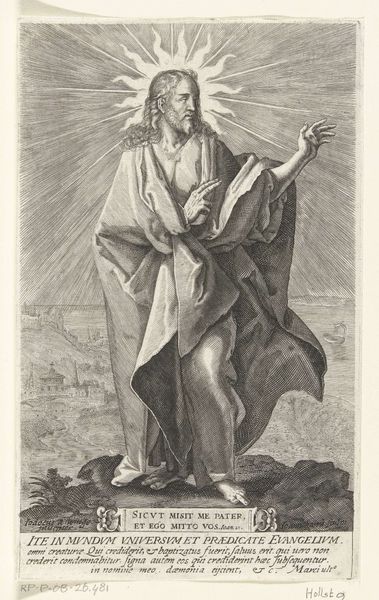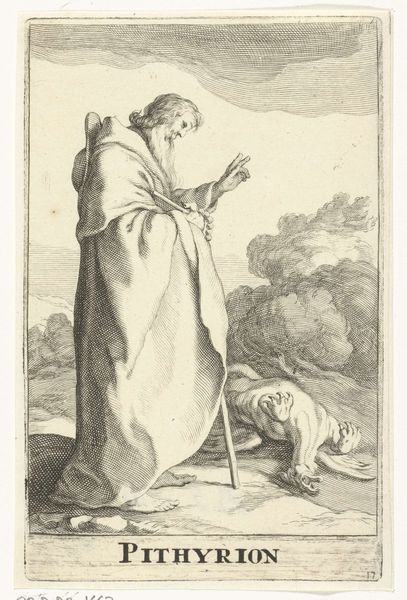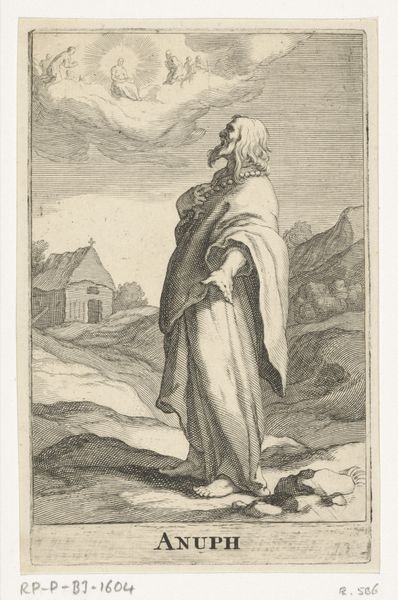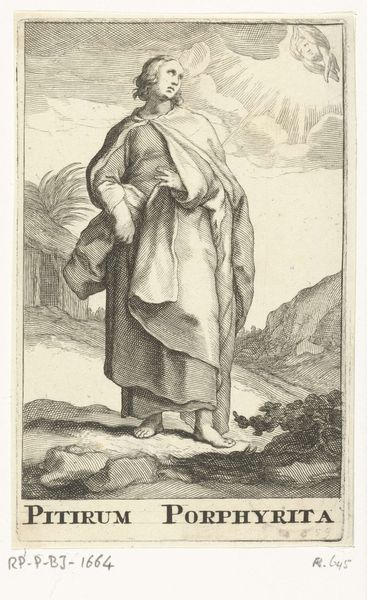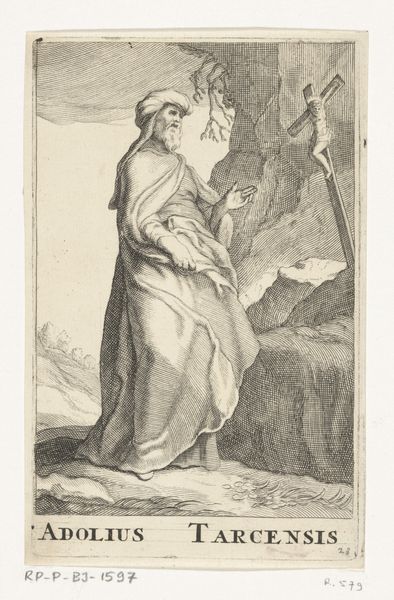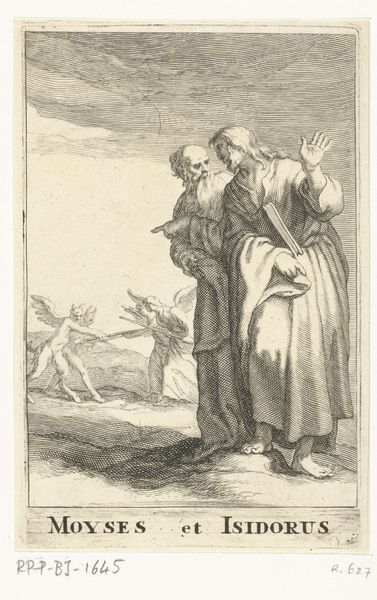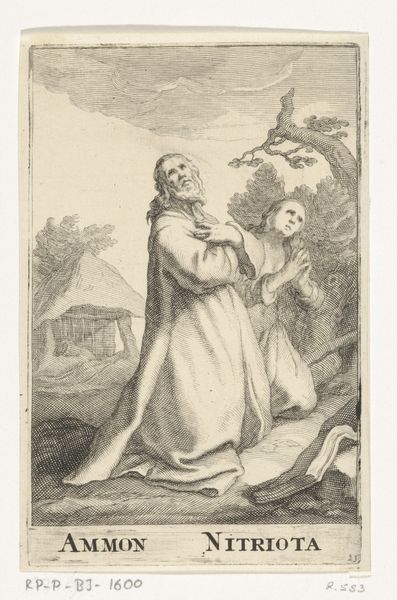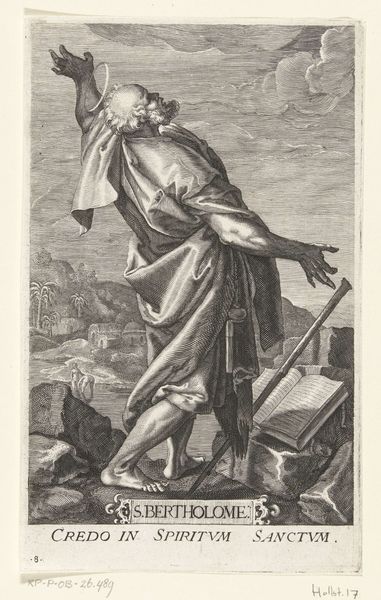
print, engraving
#
portrait
#
baroque
# print
#
old engraving style
#
figuration
#
history-painting
#
engraving
Dimensions: height 135 mm, width 85 mm
Copyright: Rijks Museum: Open Domain
Curator: So, this is "Heilige Pinian van Rome" or "Saint Pinian of Rome", an engraving by Frederick Bloemaert made sometime after 1636. It's currently held here at the Rijksmuseum. What strikes you about it? Editor: Well, immediately it's the figure, all alone. He's kneeling in what looks like a desolate landscape, maybe in supplication or… anguish? It has quite a stark and somber feeling, all those meticulously etched lines contributing to a sense of solitude. Curator: Indeed. The landscape contributes greatly to that feeling of isolation. Pinian, for those who don't know, was a Roman nobleman who, along with his wife, chose a life of religious asceticism. Bloemaert’s decision to show him removed from any sense of civilization, down on his knees, highlights that renunciation. Editor: The theatrical drama of Baroque paintings in print. It makes me wonder, though, about accessibility at the time. Was it aimed at inspiring more nobles to embrace a simple life, or was it meant for those already practicing that kind of piety? Who consumed this imagery and how was it regarded in that day and age? Curator: Interesting point. Prints like this one definitely had multiple audiences. On the one hand, prints disseminated hagiographies to a broad audience. But consider that Bloemaert came from a family of prominent artists tied to the Catholic Counter-Reformation in the Netherlands. So it’s hard to say for sure how wide its distribution really was and for what specific intentions. Editor: Yes. And in this context, a print allowed a sort of 'portable piety,' imagine a way to carry virtue or righteousness anywhere... even when one doesn't find strength in virtue. Curator: Exactly! Notice, though, how the drama also depends on the juxtaposition between Pinian’s flowing robes and the rigid lines of the cross. That interplay lends dynamism to an otherwise static scene. And let's not forget that open book. It symbolizes, perhaps, scripture or divine wisdom guiding his choice, though a razor has been carefully placed in front of it. Editor: An artistic reminder, it feels, of a man alone with god and a tough decision ahead... Bloemaert definitely encourages introspection through his print here, doesn't he? Curator: He really does. He uses a single figure to create this powerful moment that pulls us, too, into thinking about what is truly essential in our own lives, however grand.
Comments
No comments
Be the first to comment and join the conversation on the ultimate creative platform.

